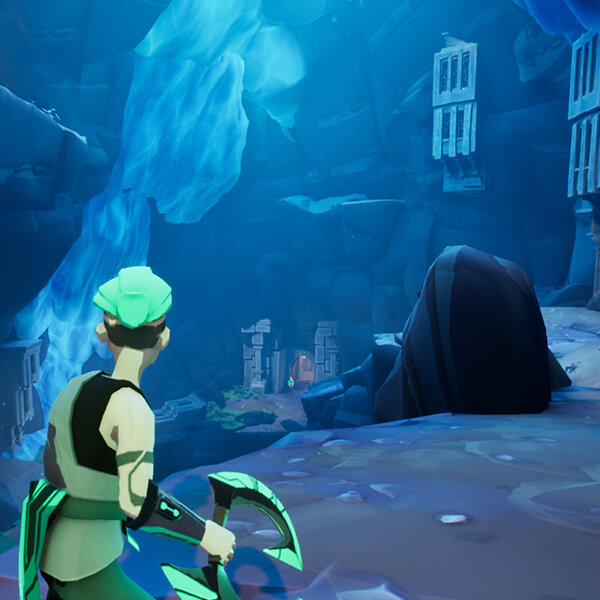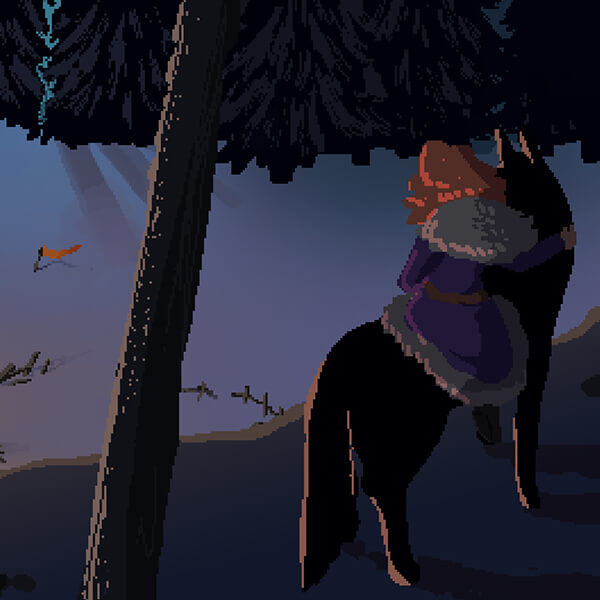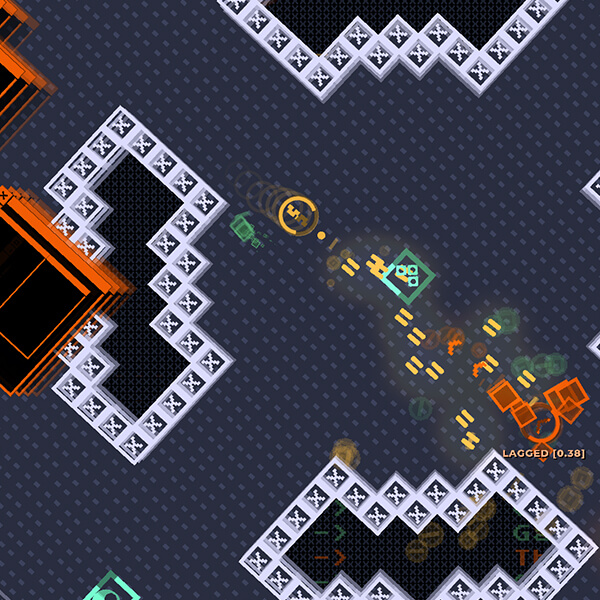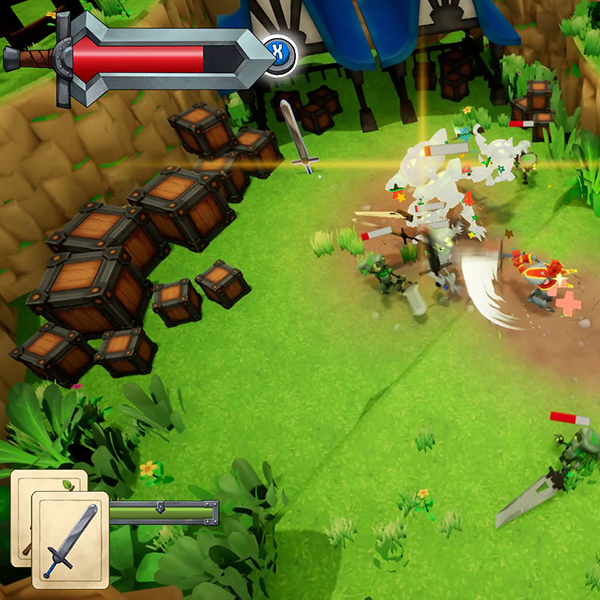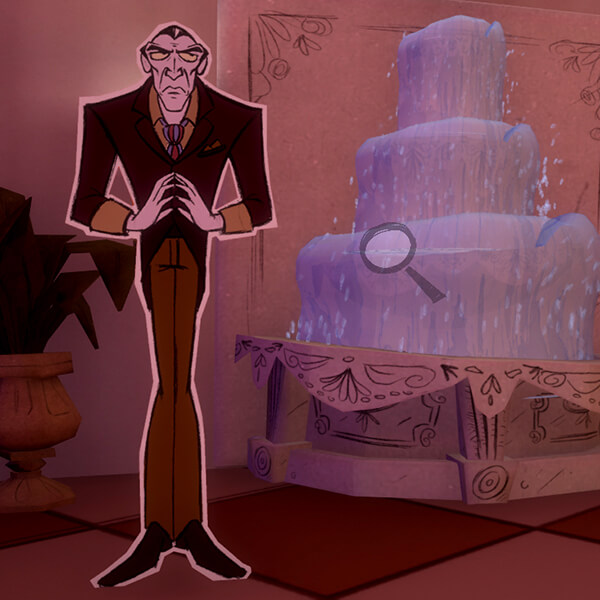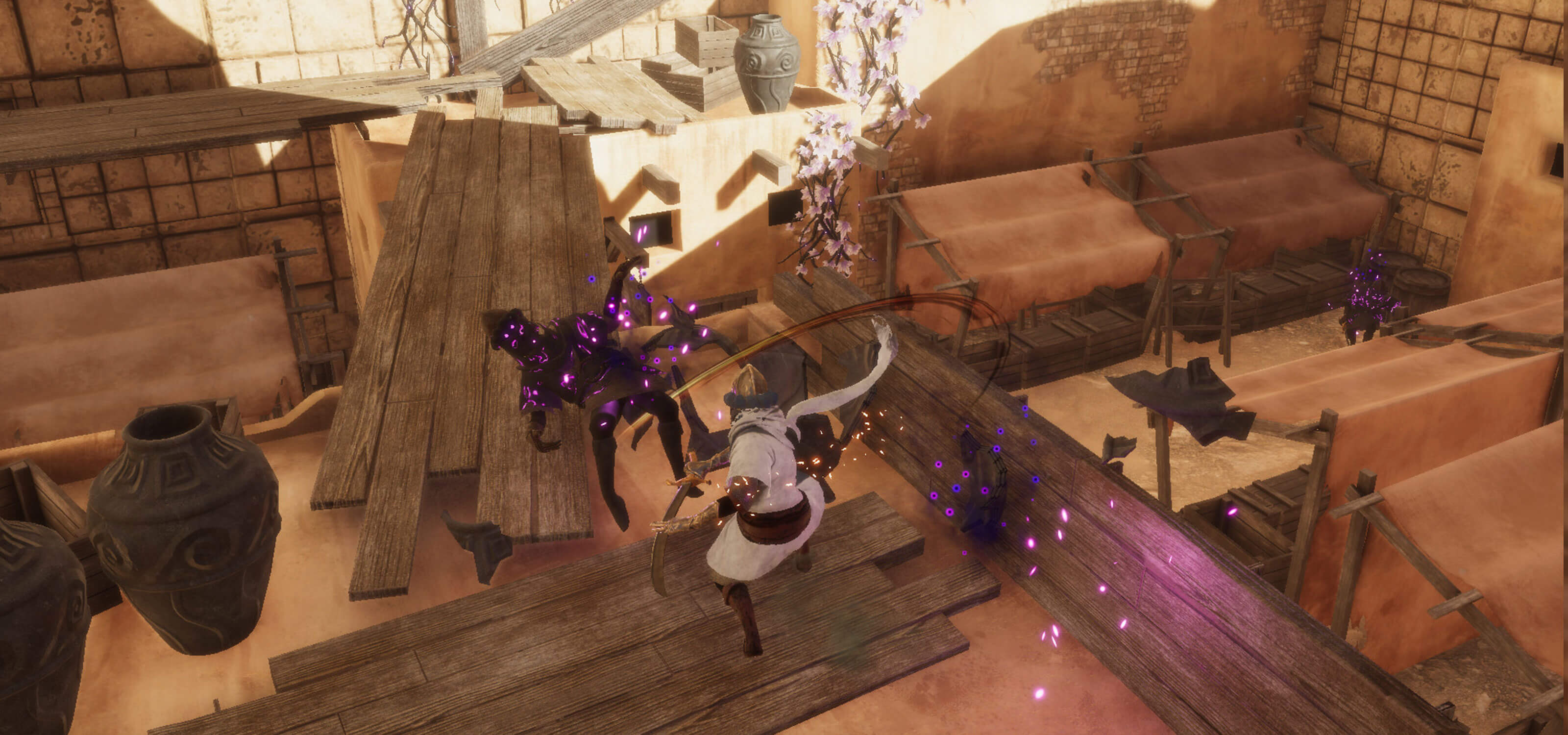DigiPen’s BA in Game Design program is built around six design concentrations — level design, narrative design, systems design, technical design, user experience design, and user research. Students spend their first two years learning about each design discipline, then choose two they would like to specialize in at the end of their sophomore year. While all six disciplines overlap and interact with one another, this series takes a closer look at each individual concentration.
Adventuring in the wilds, you come across a hostile imp armed with a wooden club. The imp bashes you for five damage, but your chain mail softens the blow, whittling the hit down to one damage. Thanks to your recently leveled-up strength, you respond in kind with a devastating critical hit from your broadsword, dealing 14 damage and instantly slaying them. You gain 60 XP, loot the imp for three gold pieces, and gather two leather scraps. You combine the leather with fiber you purchased from a merchant to craft new boots for your party’s druid, increasing their armor by one point.
To the average gamer, the above might look like a commonplace role-playing game scenario. But to DigiPen design students, it looks like a lot of carefully crafted mathematical models in motion — all interacting with one another to govern the parameters of the game’s combat, equipment, leveling, stats, economy, item crafting, loot drop rates, and more. Welcome to the world of systems design.
“Systems design is studying the underlying structure that causes a system to behave the way that it does,” says BA in Game Design program director Jeremy Holcomb. “It’s the underlying skeleton; why a system does what it does. It looks at how the parts interact, what flows because of that, and from our perspective with games, how we manipulate that to make it do what we want it to.”
Whether in a board game, a tabletop RPG, a roguelike dungeon crawler like Hades, or even a simple idle game like Cookie Clicker, a series of interconnected systems churns under the surface, affecting and guiding the moment-to-moment experience for the player. How many hit points a thing should have, how much damage an attack should do, how many actions you get to perform on your turn, how fast you move, how character stats work, how often upgrades are available, what properties items and weapons have, how you level up — the answers to all these vital questions begins with a blank page and a team of systems designers.
A lot of it is, ‘Do the math.’ But then a lot of it is, ‘What does the math feel like? Is it actually fun?’
“The first thing you do is establish some basic constraints. Throw something onto a page as fast as you can, and then play it to see what it’s like,” Holcomb says. “How much health should people have? Eight! Why? You don’t know yet. But it gives you somewhere to start.” Although starting systems design involves a certain amount of guesswork, the discipline’s main support skill, math, quickly enters the picture to direct the process. “I can do the math and tell you how many rounds it’s going to take to beat someone who has eight hit points and does an average of 3.2 damage a round with a minimum of two damage and a maximum of six,” Holcomb says. “The math can show me that something is not fun. I can run the numbers and go, ‘According to this, the minimum game time for this board game is six and a half hours. Nope, we don’t want to do that!’”
DigiPen BA in Game Design students quickly dive into the numbers in their introductory systems design course. In one project, students build their own simple pen-and-paper combat systems, exploring the differences in feel when pitting player vs. player (PvP) and player vs. environment (PvE), the latter meaning enemies controlled by the game itself. “We grab index cards, flip them over, and go, ‘Now I fight this thing!’ Then you roll dice or flip coins or allocate resources according to the combat system you designed and play the scenario out. There’s a thousand ways to do it. A lot of it is, ‘Do the math.’ But then a lot of it is, ‘What does the math feel like? Is it actually fun?’”
Indeed, although systems designers learn lots of best practices and mathematical approaches to assist them, the job entails literally making up the rules as you go. That means, oftentimes, there are no definitively correct answers. “Let’s imagine a critical hit means you do three times your basic attack damage,” Holcomb explains. “If your basic attack does 10 damage and I have four armor, what order do I apply those in? Subtract my armor first and your critical does 18 damage. Subtract my armor last and your critical hit does 26 damage. That’s a substantial difference! Neither is necessarily wrong, but you have to make a decision based on how you want your game to feel.”
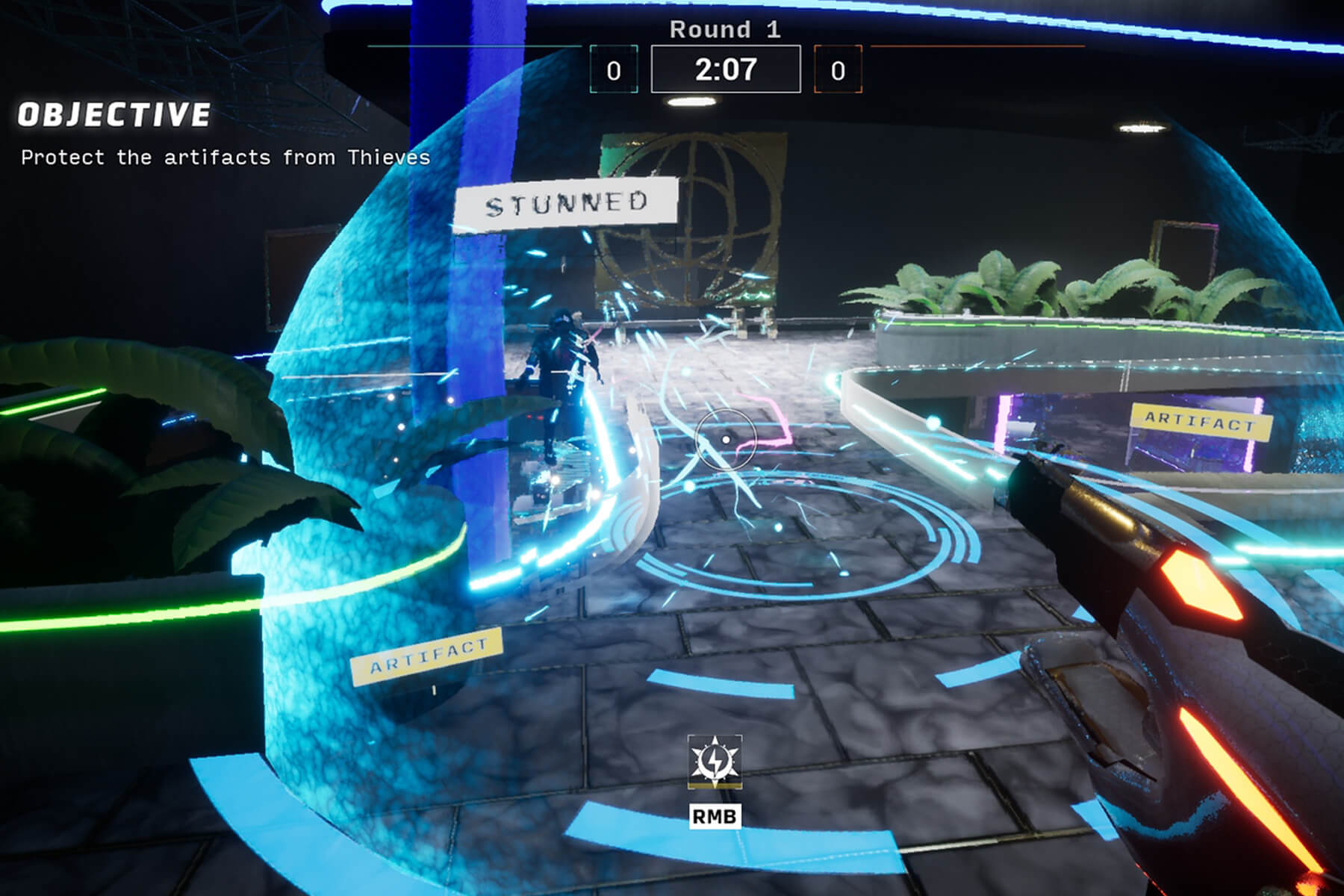
Being cognizant of the ripple effects those decisions can have is another crucial lesson DigiPen systems design students learn. “We talk about ecosystems and the Yellowstone wolves a lot,” Holcomb says. Wolves were systematically killed off in Yellowstone National Park in the early 20th century to protect ranchers’ livestock. In the proceeding decades, elk populations unexpectedly skyrocketed because of it. Huge chunks of the park’s physical landscape, including vegetation and rivers, also completely changed until the wolves were reintroduced in the 1990s. “As a systems designer, you need to learn to recognize that changing one thing over here might change something way over there for reasons you don’t immediately understand,” Holcomb says. “You need to be able to zoom out, look at the big picture for a while, and see how the decisions you’re making are connected. If players don’t care about fighting this raid boss, maybe you actually need to change the loot and jewel drop.”
As students move further along the systems design concentration, they learn to tackle even more complex systems. “The more decision makers you have in a system, the more you have to consider,” Holcomb says. “As soon as you have a multiplayer game with more than two players, things become substantially more complicated, and that’s a really interesting space to explore.” Advanced DigiPen systems designers also have the opportunity to learn how to craft intricate in-game economies, how to create systems for non-digital role-playing games, and more.
“Systems design is for students who really want control over what’s happening under the hood of the game,” Holcomb says. “It’s for people who are interested in pushing on things to see what happens, and who are willing to dig into the math to figure out what’s going on.”
DigiPen BA in Game Design student Sammy Salkind on diving into systems design:
“I love systems design because of the way it allows me as a designer to engage players. I love creating a set of rules that can make players feel unique emotions. A good set of rules can create wonderfully agonizing decisions in a strategy game, heart-pumping tension in a platformer, or an addicting sense of achievement in an idle game. Additionally, systems design tends to be focused on math – lots of balancing needs to be done so players feel the game is fair and that they always have a chance to win. Math was always my favorite subject in school, so systems design provides a creative outlet for that interest of mine.
“In The Rabbit’s Scroll, my GAM 250 project, the player takes on the role of a rabbit frantically climbing a mountain to escape a rising wave of deadly ink. As a systems designer, I adjusted the behavior and speed of the ink to create spikes of tension throughout the game, making the wave feel like a real, live antagonist. Another system I’m proud of are the potions in Froggy’s Farm and Friends, my GAM 350 project. There are six different types of potions that all have wildly different effects, from creating a rain cloud that waters your plants to making time move faster. Having so many different types allows players to create potions that suit their playstyle, making them feel more invested. For savvy players, some potions also combo with each other in interesting ways. Discovering those combos makes players feel smart and can be hugely rewarding for the people who look for them.”
Related Articles in this Series
